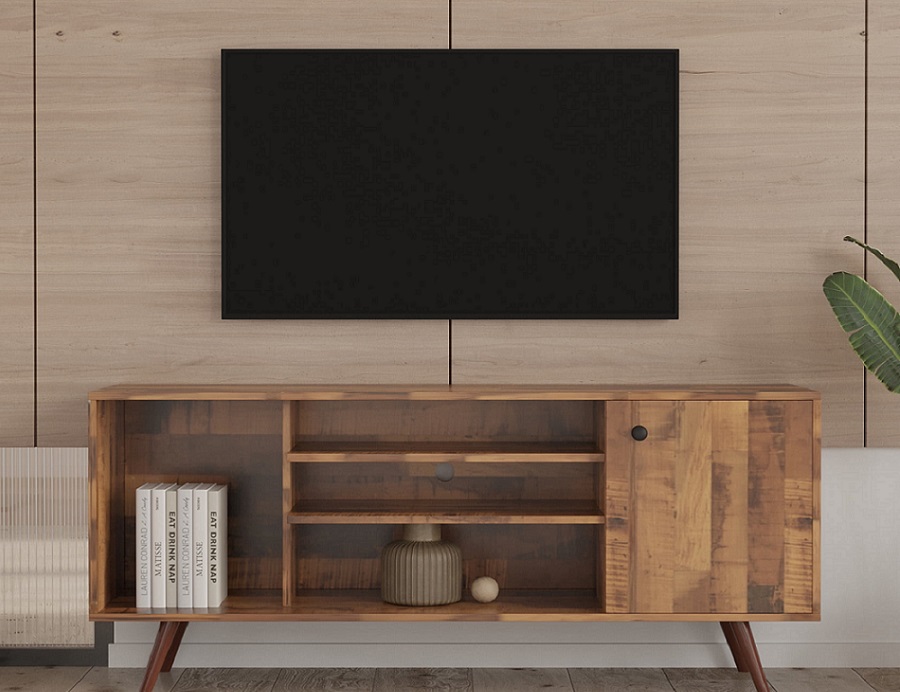In recent years, television has undergone a massive transformation from a passive viewing device to an intelligent hub that controls your entertainment, connectivity, and even some aspects of your smart home. At the heart of this revolution is the smart LED TV, a technology that brings the interactivity of the internet to the familiar comfort of your living room.
Gone are the days when watching TV meant flipping through channels or inserting DVDs. Today, we browse content like we browse the internet, stream movies with the click of a button, and even use our voice to search for a specific actor’s entire filmography. This article explores the technological elements that make a smart LED TV genuinely “smart” from voice assistants and screen mirroring to app integration and artificial intelligence.
1. The Core of Smartness: Internet Connectivity
At the most fundamental level, a smart LED TV distinguishes itself from traditional TVs through its ability to connect to the internet. This connectivity enables a range of functions that weren’t possible with older models, including:
- Streaming Video Content: Platforms like Netflix, Amazon Prime Video, Disney+, and YouTube can be accessed directly without the need for external devices.
- Software Updates: The TV can update its own firmware, adding new features or security improvements over time.
Internet connectivity is the backbone that supports all the smart features discussed in this article.
2. App Ecosystems: Your Personalized Entertainment Library
Much like a smartphone, a smart LED TV comes with access to an app store where users can download applications tailored to their viewing habits. This means you’re not restricted to pre-loaded apps.
Many TVs even support gaming apps or educational content for children, making the smart TV a multipurpose device.
Moreover, many app stores allow personalization. You can organize your homepage to feature the apps you use most, creating a dashboard that feels custom-made.
3. Voice Assistants: Talk to Your TV
Voice assistance is one of the standout features that modern users have come to expect. Integrated AI-based voice assistants such as Google Assistant, Amazon Alexa, or proprietary options, allow users to control the TV and other connected devices through simple voice commands.
What Can Voice Assistants Do?
- Search for Content: Instead of typing, just say “Play Stranger Things on Netflix.”
- Control Playback: Say “Pause” or “Rewind 10 seconds” and the TV responds.
- Adjust Settings: Change brightness, volume, or input sources with your voice.
- Smart Home Integration: Control other devices like lights, thermostats, or smart plugs connected to the same network.
Voice assistants reduce the need to use a remote control and make interaction with the television more intuitive.
4. Screen Mirroring and Casting: A Bigger View for Everything
Smart TVs today also support screen mirroring and casting, features that allow you to display content from a mobile device or computer directly onto the TV screen.
Screen Mirroring:
Users can mirror everything on their phone, tablet, or laptop screen to the TV. This is ideal for showing photos, videos, or presentations.
Casting:
Apps like YouTube and Netflix allow casting, where only the media is played on the TV while the device can be used for other tasks.
This makes the 55 inch smart LED TV more than a content consumption device, it becomes an extension of your mobile experience, ideal for work, social sharing, or even remote meetings.
5. Multi-Device Synchronization and Control
Today’s smart homes are all about interconnected devices, and your TV is often the control center. A smart LED TV can be synced with other devices like:
- Smart speakers (e.g., Google Nest, Amazon Echo)
- Surveillance cameras (view feeds on your TV)
- Home automation systems (adjust lights, check thermostat)
With apps like SmartThings or Google Home, your TV becomes a dashboard for managing your digital ecosystem.
6. Advanced Display Technologies
Of course, no smart feature would matter much without exceptional display quality. The “LED” in smart LED TV means the television uses Light Emitting Diodes for backlighting, offering excellent brightness, contrast, and energy efficiency.
When you step up to a 55 inch smart LED TV, you typically enjoy enhancements such as:
- 4K UHD Resolution: Sharper images with more detail.
- HDR (High Dynamic Range): Greater color depth and contrast.
- Wide Viewing Angles: Everyone in the room sees a consistent picture.
These display technologies ensure that the content looks as good as it is accessible.
7. Parental Controls and Security Features
With smart capabilities comes responsibility. Leading manufacturers ensure their TVs are equipped with settings to:
- Filter content by age appropriateness.
- Set time limits for usage.
- Monitor app downloads and purchases.
Furthermore, updates can patch vulnerabilities, and user authentication measures (PINs, passwords) keep your data secure.
8. Setup and User Interface
User interfaces (UIs) have evolved to become more intuitive, responsive, and customizable.
- Grid-based layouts make finding apps easier.
- Voice search bars offer hands-free navigation.
- Quick settings allow for fast changes to volume, brightness, and network status.
Initial setup is also easier than ever, just log in with your Google or Samsung account, and the TV configures itself with personalized settings and apps.
9. Firmware Updates and Longevity
Another mark of a true smart TV is its ability to grow over time. Firmware updates provide:
- Improved functionality
- Security patches
- Support for new apps or services
Many manufacturers push updates automatically, ensuring your TV remains current and safe even years after purchase.
10. Accessibility Features
Inclusivity is another area where smart TVs excel. Features include:
- Text-to-speech
- Closed captioning
- Audio descriptions
- Voice command navigation
These make the smart LED TV a versatile device for all age groups and abilities.
Conclusion:
A television is no longer just a screen; it’s an intelligent, interactive centerpiece that blends entertainment, convenience, and connectivity. From voice control to multi-device sync, screen mirroring to AI-powered recommendations, the smart LED TV is redefining what it means to “watch television.”
And with options like the 55 inch smart LED TV, you don’t just get smart features, you get them at scale, transforming the living room into a hub for streaming, gaming, social interaction, and even productivity.



